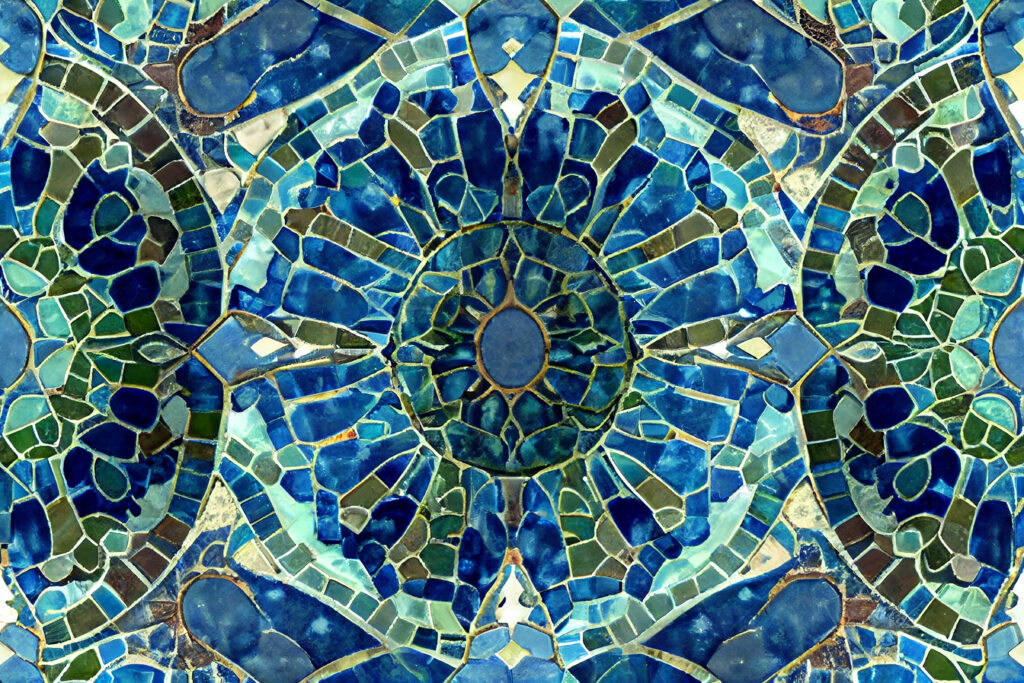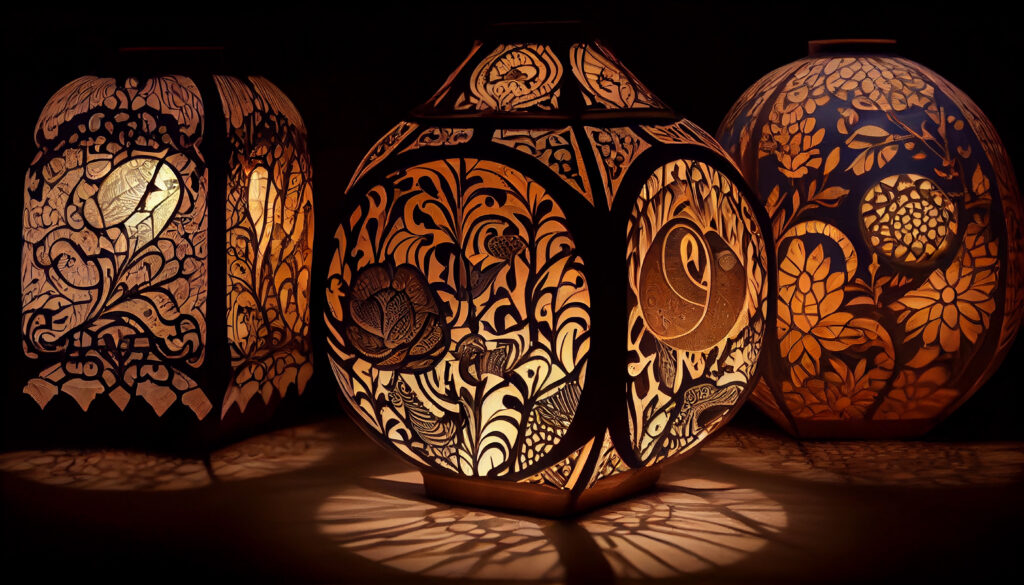
Stained glass, with its rich history and timeless beauty, is experiencing a renaissance in the modern era. Artists and enthusiasts alike are rediscovering the allure of this classic craft, infusing it with contemporary creativity. This article explores the evolution of stained glass, from traditional techniques to modern interpretations, and its diverse applications in today’s world.
I. Introduction
A. Brief history of stained glass
Stained glass has adorned cathedrals and religious structures for centuries, dating back to the medieval era. Its origins can be traced to the 7th century, and the craft evolved through various artistic movements.
B. The resurgence of interest in stained glass
In recent years, there has been a notable resurgence of interest in stained glass. Modern artists are drawn to its unique blend of craftsmanship and artistic expression, leading to a revival of this ancient art form.

II. Traditional Stained Glass Techniques
A. Overview of traditional methods
Traditional stained glass techniques involve the meticulous assembly of colored glass pieces using lead or copper foiling. Artisans carefully craft intricate designs, showcasing their skill and dedication.
B. Historical significance
The historical significance of traditional stained glass extends beyond its aesthetic appeal. It has often served as a storytelling medium, depicting religious narratives and historical events.
C. Craftsmanship and skill required
Creating traditional stained glass requires a high level of craftsmanship and skill. Artisans undergo extensive training to master the techniques passed down through generations.
III. Modern Interpretations
A. Contemporary artists embracing stained glass
Modern artists are embracing stained glass as a versatile and expressive medium. From renowned studios to emerging talents, there is a growing community of artists pushing the boundaries of traditional techniques.
B. Fusion of traditional and modern elements
A notable trend is the fusion of traditional stained glass elements with modern artistic influences. This blending of styles results in visually stunning pieces that bridge the gap between the past and the present.
C. Evolving designs and techniques
The evolution of stained glass is evident in the ever-changing designs and techniques employed by contemporary artists. Experimentation with color palettes, textures, and three-dimensional effects is pushing the boundaries of what stained glass can achieve.
IV. Stained Glass in Interior Design
A. Integration into modern homes
Stained glass is finding its way into modern homes as a unique and personalized form of interior design. From custom windows to room dividers, homeowners are incorporating stained glass to add a touch of artistry to their living spaces.
B. Unique applications in commercial spaces
Beyond residential settings, stained glass is making its mark in commercial spaces. Restaurants, hotels, and businesses are utilizing stained glass installations to create captivating and memorable environments.
C. Aesthetic and functional benefits
Apart from its aesthetic appeal, stained glass offers functional benefits such as privacy, light diffusion, and energy efficiency. This dual purpose makes it an attractive choice for both residential and commercial applications.

V. DIY Stained Glass Projects
A. Rise in popularity of DIY stained glass
The rise of do-it-yourself (DIY) culture has extended to stained glass projects. Enthusiasts are exploring their creativity by taking on stained glass as a rewarding and fulfilling hobby.
B. Resources for beginners
For beginners, numerous resources, online tutorials, and workshops guide getting started with stained glass projects. The accessibility of materials has further fueled the popularity of DIY stained glass.
C. Tips for successful projects
Embarking on a stained glass project can be daunting, but with the right tips and techniques, enthusiasts can ensure successful outcomes. Attention to detail, patience, and a willingness to learn are key to mastering the craft.
VI. Stained Glass and Technology
A. Innovations in glass technology
Advancements in glass technology have influenced the stained glass landscape. New types of glass with enhanced properties, such as durability and translucency, are expanding the possibilities for artists.
B. Interactive and dynamic stained glass installations
The marriage of stained glass and technology has led to interactive and dynamic installations. Incorporating sensors, lighting effects, and even smart home integration, artists are pushing the boundaries of traditional stained glass.
C. Fusion with smart home features
Stained glass is finding synergy with smart home features, creating functional and aesthetic elements. Smart windows with programmable tint and dynamic lighting add a futuristic touch to traditional stained glass installations.
VII. Social Media Influence
A. Impact of social platforms on Stained Glass trends
The visual nature of stained glass makes it highly shareable on social media platforms. Instagram, Pinterest, and other platforms are becoming hubs for stained glass enthusiasts, fostering a vibrant online community.
B. Hashtags and communities fostering creativity
Dedicated hashtags and online communities allow artists and enthusiasts to showcase their work, exchange ideas, and inspire one another. The online presence of stained glass is contributing to its resurgence in popularity.
C. Showcasing modern stained glass on Instagram, Pinterest, etc.
Artists leverage the power of visual platforms to showcase their modern stained-glass creations. The ability to reach a global audience has played a crucial role in bringing this traditional craft into the spotlight.
VIII. Stained Glass and Sustainable Practices
A. Eco-friendly materials and techniques
With a growing emphasis on sustainability, stained glass artists are exploring eco-friendly materials and techniques. Recycling glass and minimizing environmental impact are becoming integral to the craft.
B. Artists contributing to environmental awareness
Stained glass artists are increasingly conscious of their environmental footprint. Some are actively involved in initiatives that promote awareness and sustainable practices within the art community.
C. Stained glass as a sustainable art form
The inherent durability of stained glass contributes to its sustainability. As a long-lasting art form, stained glass installations can withstand the test of time, reducing the need for frequent replacements.
IX. Challenges and Criticisms
A. Cost considerations
One challenge associated with stained glass is the cost involved. Both the materials and the skilled craftsmanship can be expensive, limiting access for some enthusiasts and potential clients.
B. Maintenance challenges
Stained glass, especially in architectural settings, requires regular maintenance to preserve its beauty. Weather exposure and other environmental factors can pose challenges, necessitating ongoing care.
C. Criticisms within the art community
Despite its resurgence, stained glass faces criticism within the art community. Some argue that it is too traditional or religious, hindering its acceptance as a contemporary art form.
X. Future Outlook
A. Emerging trends in stained glass
The future of stained glass holds exciting possibilities. Emerging trends include the use of unconventional materials, experimentation with abstract designs, and collaborations with other art forms.
B. Potential collaborations with other art forms
Stained glass artists are exploring collaborations with artists from diverse disciplines, leading to innovative and interdisciplinary creations. These partnerships are breaking down boundaries and expanding the potential of stained glass.
C. Anticipated advancements in the craft
Anticipated advancements in stained glass include the integration of sustainable practices, further developments in smart glass technology, and increased accessibility for aspiring artists.
XI. Conclusion
In conclusion, the stained glass Renaissance is a testament to the enduring appeal of this ancient craft. From its traditional roots to modern interpretations, stained glass continues to captivate and inspire. As artists push boundaries, embrace technology, and explore sustainability, the future of stained glass looks promising.
FAQs
- Can I learn stained glass on my own? Absolutely! Learning stained glass on your own is not only possible but also increasingly popular. Numerous online resources, video tutorials, and workshops cater to beginners. Start with small projects to build confidence, and as you become more comfortable with the techniques, you can take on more intricate designs. Patience and practice are key to mastering the art of stained glass.
- Are there any sustainable practices in stained glass art? Yes, stained glass artists are increasingly adopting sustainable practices. Some use recycled glass, reducing the environmental impact. Additionally, artists may engage in initiatives promoting environmental awareness within the art community. By choosing eco-friendly materials and methods, stained glass artists contribute to the broader sustainability movement.
- How expensive is stained glass art? Stained glass art can be relatively expensive, considering the cost of materials and the skill required. Professional craftsmanship, intricate designs, and high-quality glass contribute to the overall cost. However, for those on a budget or looking for a more affordable entry point, engaging in DIY stained glass projects can significantly reduce costs while providing a fulfilling creative experience.
- Is stained glass only for religious or traditional themes? No, stained glass art has evolved beyond religious and traditional themes. Modern artists are breaking away from conventional constraints, exploring diverse themes such as abstract designs, contemporary art, and personal expressions. Stained glass is a versatile medium that allows artists to experiment with a wide range of styles and subjects, making it accessible to a broader audience.
- Can stained glass be integrated into smart homes? Absolutely! Stained glass and technology integration have opened new possibilities for smart home enthusiasts. Smart windows with programmable tint, dynamic lighting effects, and even interactive installations are becoming popular. Artists and homeowners alike are exploring ways to merge the timeless beauty of stained glass with the convenience and innovation of smart home features, creating a harmonious blend of tradition and modernity.
